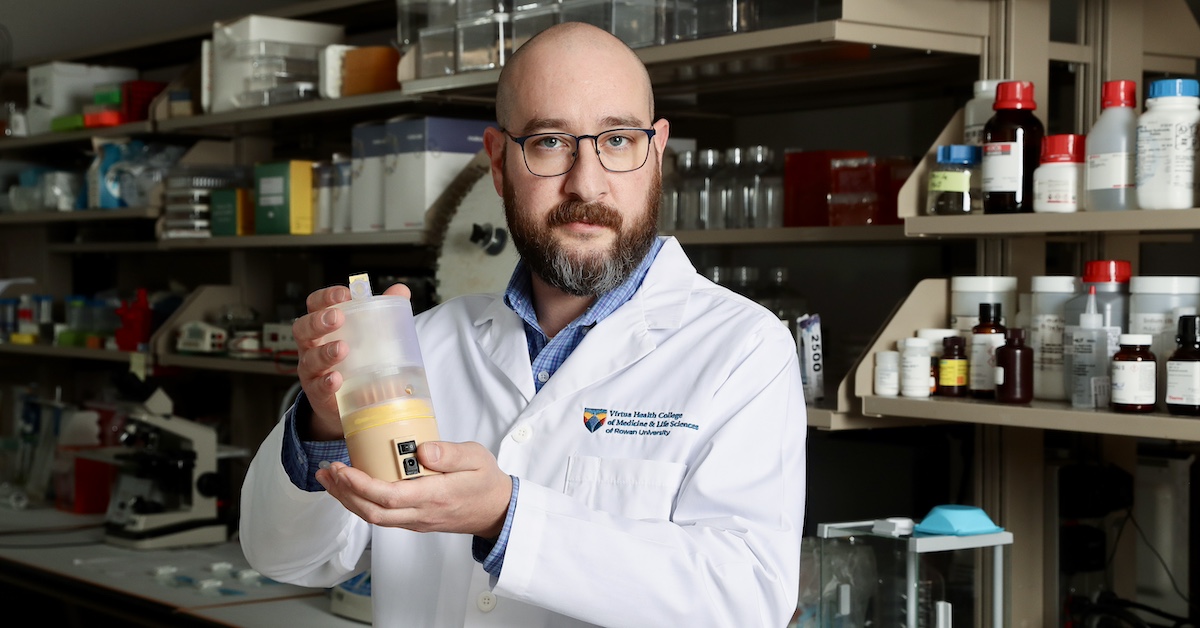Vaping products can cause varying harm to airways
Vaping products can cause varying harm to airways

Nearly a decade after the first e-cigarette hit the market, researchers have established that inhaling the nicotine-laden vapor from these devices is less dangerous than smoking an old-fashioned cigarette. But that doesn’t mean e-cigarettes and other forms of vaping are safe.
Not only have additives like flavorings and solvents raised health concerns, the process of vaporizing the liquid within the device generates numerous new chemicals—some of which are known to be detrimental to health.
“The question then becomes, how toxic is vaping to our tissues? And what are some of the signs that somebody is experiencing this toxicity?” says Vincent Manna, an assistant professor in the Rowan-Virtua School of Translational Biomedical Engineering & Science at the Virtua Health College of Medicine & Life Sciences.
Manna’s work on vaping grew out of a project on a different topic, which he undertook as a graduate student at the request of Sal Caradonna, a professor in the department who has since died. Caradonna asked Manna to study a protein called Cyclin O produced by a particular type of cell found in the lining of the body’s airways. Through his reading, Manna learned it was possible to generate the whole tissue continuing these cells in a culture dish.
“My mind just started racing with ideas for how we could use this tissue in research,” Manna said.
Inspired, he developed a method for growing roughly penny-sized, fully functional pieces of airway tissue from cells collected by brushing the inside of donors’ noses.
After he and Caradonna discussed an outbreak of pneumonia-like disease caused by vaping, which peaked in 2019, Manna decided to study the effects of vaping. To expose the airway tissue to vapor, he designed his own vaping simulator, which he and Caradonna patented through Rowan. Tissue samples sit in wells at the bottom of its closed compartment. One fan sucks the vapor in from holes in the top; a second then blows the vapor out, mimicking an inhale and an exhale.
In a recent study published in Toxicology In Vitro and supported by a grant from the New Jersey Health Foundation, Manna and his team used the device to compare the effects of vaping solvents. The first was vitamin E acetate, a solvent used to dissolve THC from marijuana and that the Centers for Disease Control and Prevention blamed for the vaping-induced disease. The researchers found that vitamin E acetate immediately recondensed onto the tissue, forming oil droplets that likely collected in the lungs, causing pneumonia-like symptoms.
The solvents from the nicotine-containing e-cigarettes meanwhile did not recondense, but appeared to cause a decrease in certain cells within the tissue.
Going forward, Manna wants to compare the toxicity of various vaping products by looking at gene expression and proteins within the tissue samples. Over the long term, he hopes to identify markers to indicate if vaping has caused significant damage to the airways. Additional funding from the New Jersey Health Foundation is supporting this research.
After Caradonna died suddenly last summer, administrators invited Manna, then a postdoc, to stay on as an assistant professor. Manna has since recruited four medical student researchers to work in the lab.
“From the students all the way up to the dean, there’s a level of support, community and excitement that really made me want to stay here and keep building my research here,” Manna said.